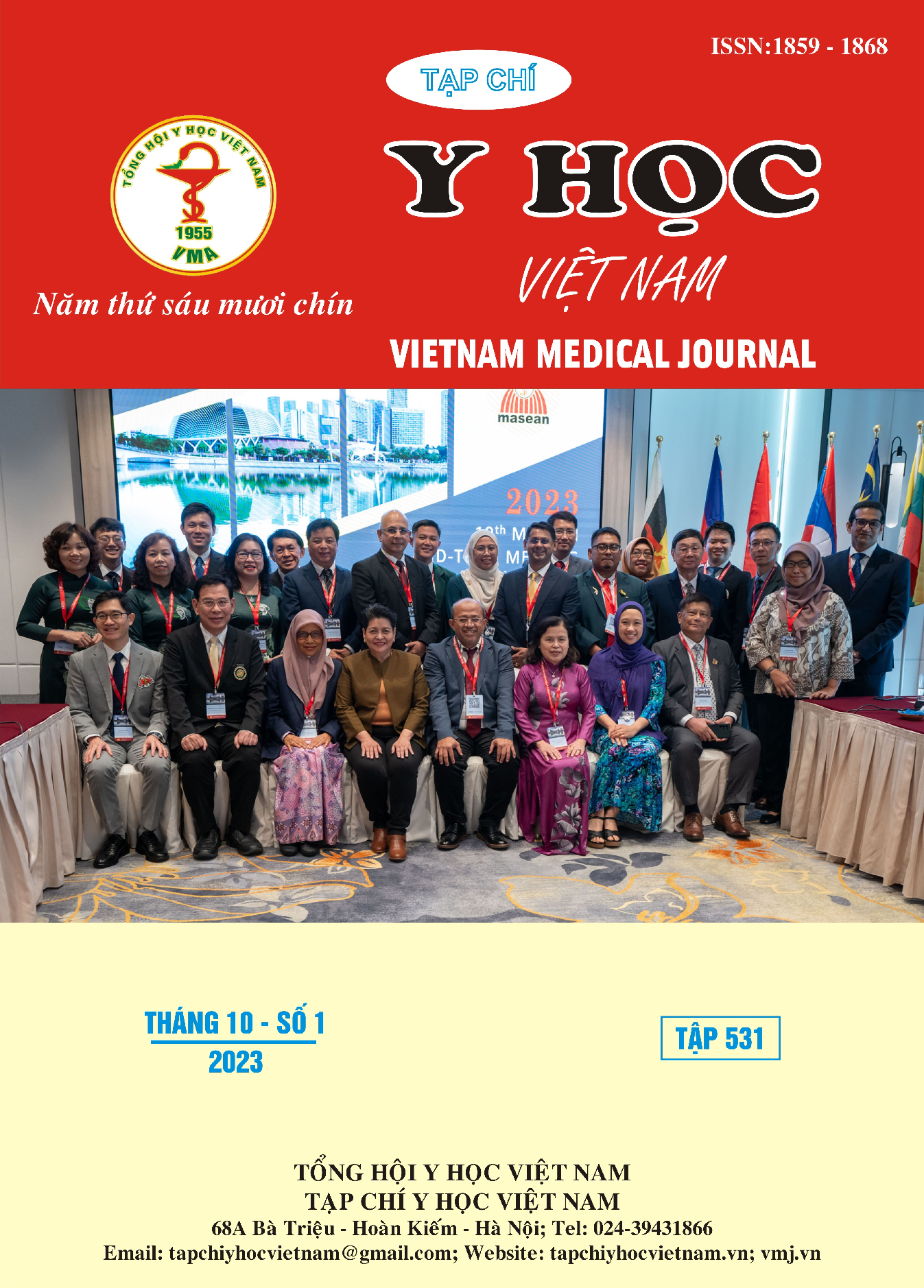EFFECTIVENESS OF FRACTIONAL ND:YAG 1064NM PICOSECOND LASER IN THE TREATMENT OF ATROPHIC SCAR IN UNIVERSITY MEDICAL CENTER AT HO CHI MINH CITY
Main Article Content
Abstract
Objectives: To evaluate the clinical efficacy of fractional Nd:YAG 1064nm picosecond laser in the treatment of atrophic scars in University Medical Center at Ho Chi Minh city. Material and methods: A descriptive study of a series of cases, longitudinal follow-up was conducted on 26 patients with atrophic scar and indicated treatment with fractional Nd:YAG 1064nm picosecond laser at Department of Dermatology and Skin Aesthetics – University Medical Center at Ho Chi Minh city from 8/2021 to 8/2023. Results: Among 26 patients in this research, the mean age was 30,9, most of them had Fitzpatrick skin type IV, history of comedo extraction and had family history of atrophic scar. Stratification of patients regarding severity led to 11% in the mild subgroup, 19% in the moderate subgroup, and 70% in the severe subgroup. After 3 treatments with fractional Nd:YAG 1064nm picosecond laser, 96,9% of patients reported satisfied or very satisfied with the results. Goodman-Baron score improved, but the difference after first and second treatment did not reach statistical significance until the third time (p < 0,001). Skin analysis score using VISIA and Colorimeter also showed significant improvements. The amelioration of Goodman & Baron in the subgroup treated with high laser energy was significantly better than the low and moderate subgroup. Conclusion: Fractional Nd:YAG 1064nm picosecond laser is an effective and promising method in the treatment of atrophic scars.
Article Details
Keywords
fractional Nd:YAG 1064nm picosecond laser, atrophic scar
References
2. Chilicka K, Rusztowicz M, Szyguła R, Nowicka DJJoCM. Methods for the improvement of acne scars used in dermatology and cosmetology: a review. 2022;11(10):2744.
3. Dai YX, Chuang YY, Chen PY, Chen CCJLiS, Medicine. Efficacy and safety of ablative resurfacing with a high‐energy 1,064 Nd‐YAG picosecond‐domain laser for the treatment of facial acne scars in Asians. 2020;52(5):389-395.
4. Li B, Ren K, Yin X, She H, Liu H, Zhou BJJocd. Efficacy and adverse reactions of fractional CO2 laser for atrophic acne scars and related clinical factors: a retrospective study on 121 patients. 2022;21(5):1989-1997.
5. Manuskiatti W, Punyaratabandhu P, Tantrapornpong P, Yan C, Cembrano KAGJLiS, Medicine. Objective and long‐term evaluation of the efficacy and safety of a 1064‐nm picosecond laser with fractionated microlens array for the treatment of atrophic acne scar in Asians. 2021;53(7):899-905.
6. XU XG, LUO YJ, Wu Y, et al. Immunohistological evaluation of skin responses after treatment using a fractional ultrapulse carbon dioxide laser on back skin. 2011;37(8):1141-1149.
7. Yang CS, Huang YL, Cheng CY, et al. A prospective study of fractionated dual‐wavelength picosecond laser in treating acne scar. 2020;52(8):735-742.


